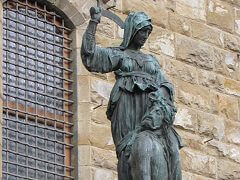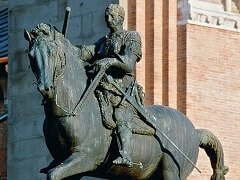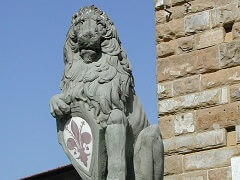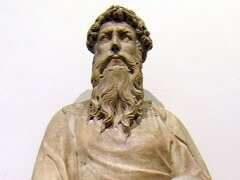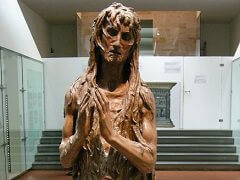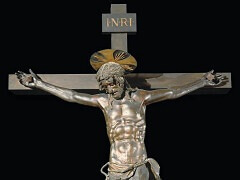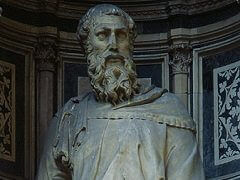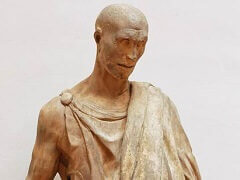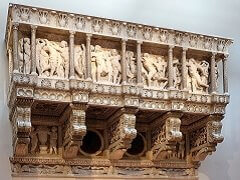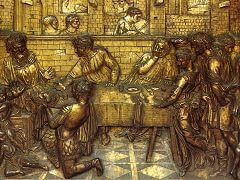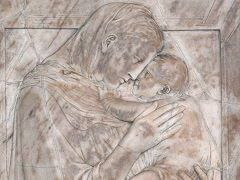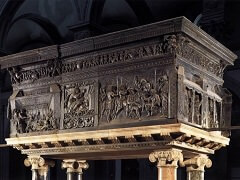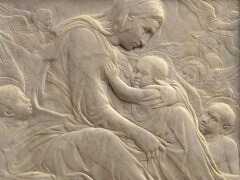Saint George by Donatello
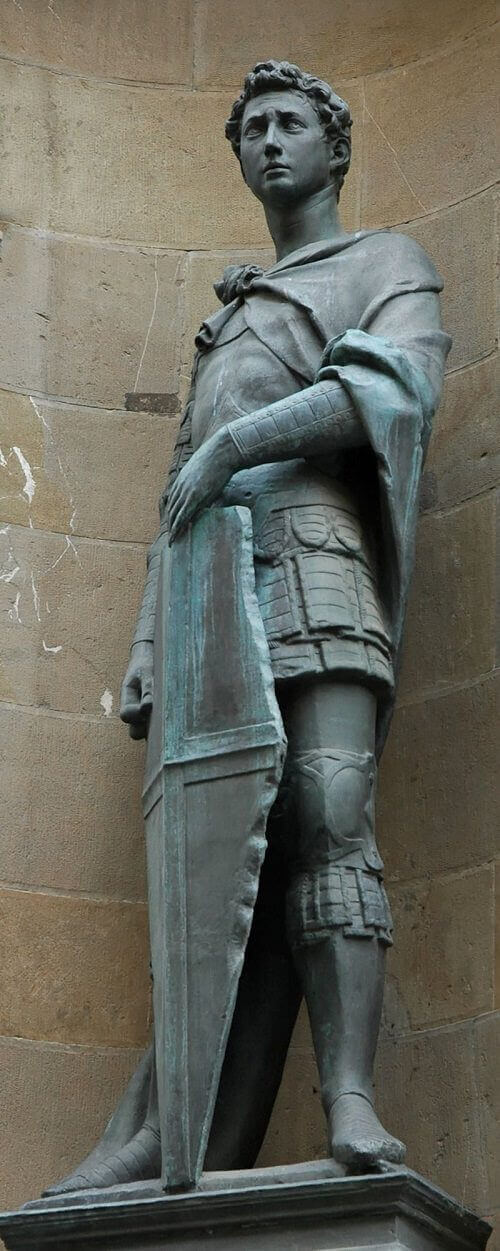
Donatello completed his famous Saint George for the Confraternity of the Cuirass-makers in 1417 and it would mark an important step in the journey of liberating status from a niche structure. It was carved for a guild of sword makers of average size that could only afford a statue of marble, rather than of bronze. Saint George was the patron saint of the armourer's guild and was known as military figure, as well as a hero in the Holy Land, making him a fitting subject. A popular tale involving the hero defeating a dragon came to be know through the collection of stories called the Golden Legend in the late thirteenth century.
Housed today in Bargello, the figure exhibits a strong physical presence, bolstered by the shield that projects out of the physical space, adding to the indomitable image of a brave knight. He appears as if he could rotate on the small base, implying a sense of readiness on the part of the saint to quickly confront enemies coming from all directions. His legs ably support the front of the left foot is not completely planted on the based, but instead partially hangs off the front, suggesting a poised posture, ready for attack. The reason for such a stance has been linked to political events surrounding Florence during the years leading up to the statue's creation. In 1410 a new threat emerged from the south. An army from Naples, led by a tyrant, was mobilising and Florence was in danger of being invaded. However, before the thread could turn into disaster for the Florentines, the Neapolitan tyrant was struck by disease and perished. Thus, Florence was spared again from being the conquest of a more powerful foe. Donatello's portrayal of Saint George seems to conincide with the idea of standing tall against an approaching enemy; a sentiment no doubt shared by many of fellow Florentine during an uncertain time.
However, the statue is just as remarkable for introducing an entirely new form of artistic work, located beneath the figure. The elegant Saint George and the Dragon relief on the statue's base, depicting the saint's combat with the dragon for the freeing of the Princess of Cappadocia, is one of the first examples of central-point perspective in sculpture. Donatello would have developed an appreciation of pictorial narration while working on Ghiberti's narrative relief panels fro the north door of Baptistery, in which he extended the apparent depth of scene by placing boldly rounded foreground figures against more delicately modelled settings of landscape and architecture.


